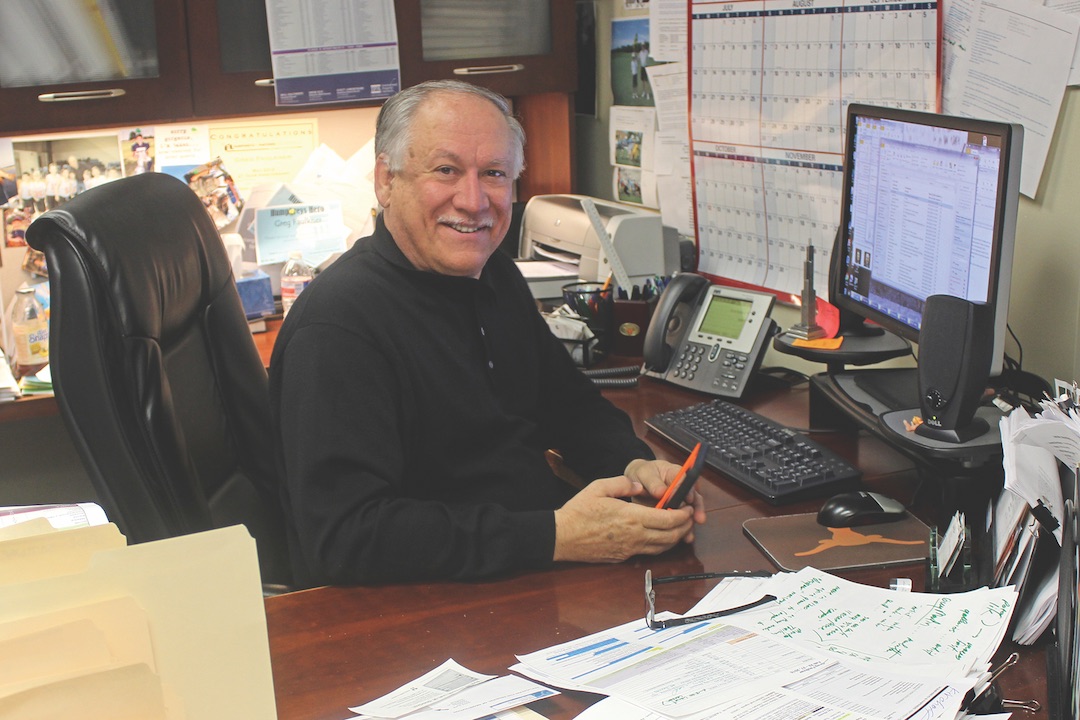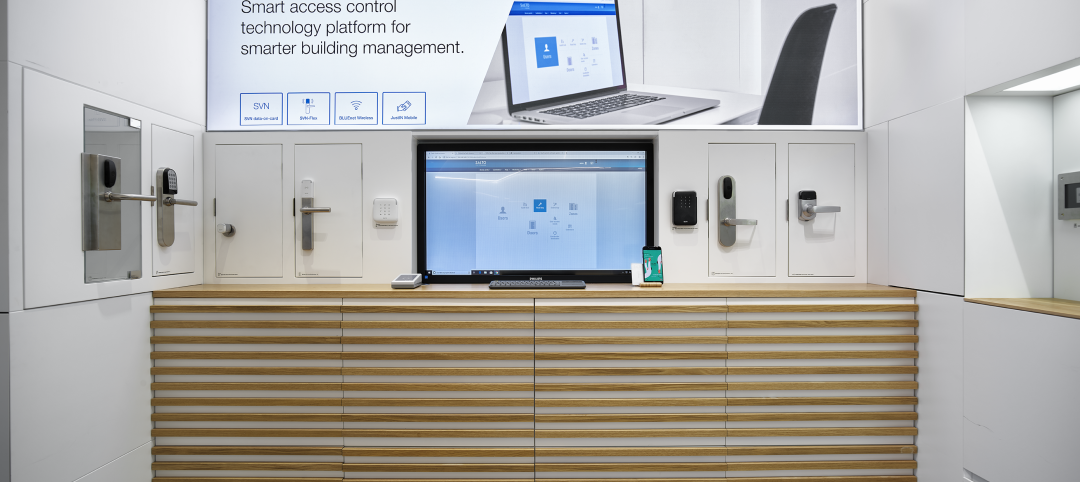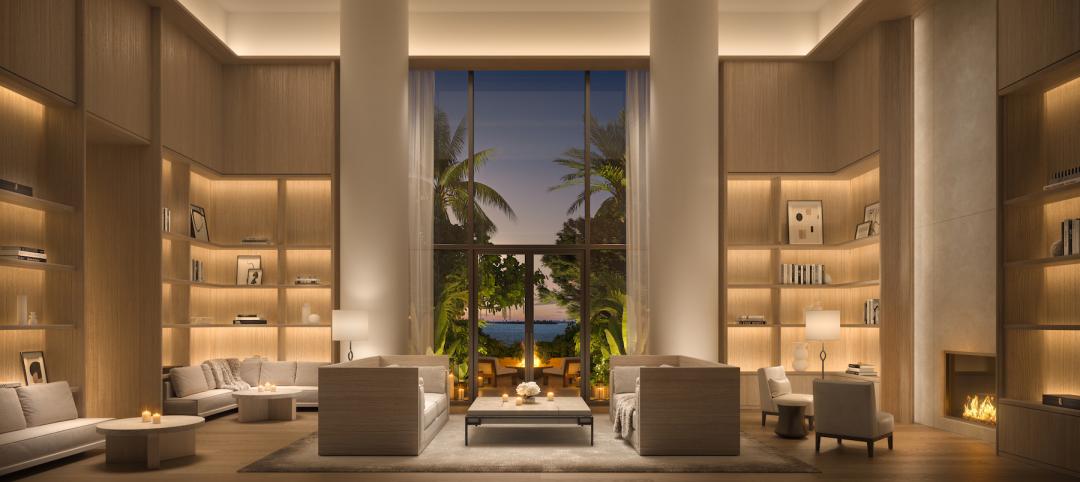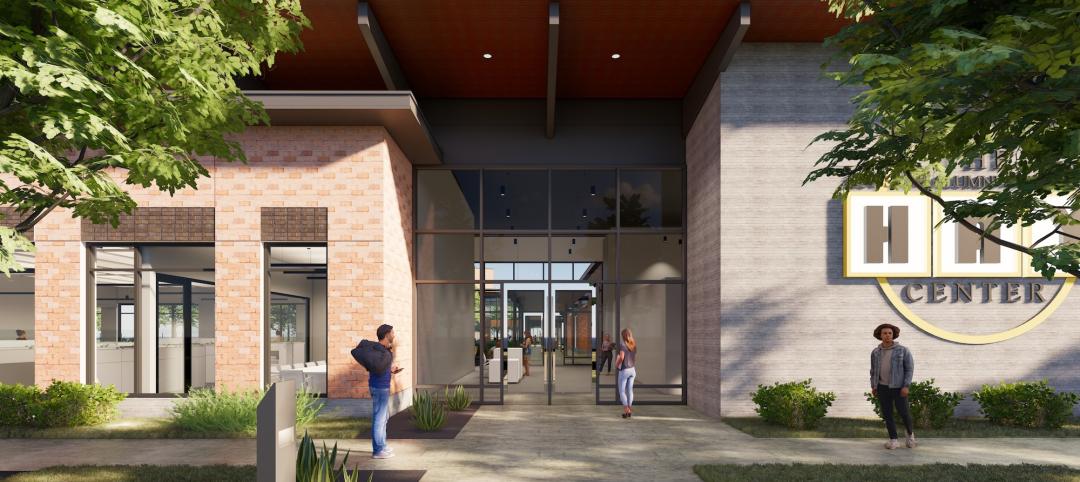Legend has it that Mark Humphreys won his first design award while still a student at Dallas’s W. T. White High School. The winning entry was a home he designed for a district-wide competition. As an architecture student at Texas Tech in the mid-1970s, he took a part-time job designing apartment buildings for a local developer in Lubbock. It didn’t take him long to figure out that he could do the same work on his own. Before you could say “Go Red Raiders,” he had a posse of other Texas Tech architecture students punching out residential designs for his own business.
After earning his architecture degree in 1978, Humphreys had stints at various firms in Lubbock before moving to Dallas in 1989. There he worked with Greg Faulkner, a University of Texas–trained architect who had experience working for a developer in Memphis. Two years later, in defiance of the horrific recession that was paralyzing the U.S. economy, they launched Humphreys & Partners Architects.
With the recession in full swing, 1991 was hardly the best time to roll out any business, no less an architecture firm. Skilled professionals were being laid off right and left; a whole generation of architects would be lost during this period. “There wasn’t much multifamily work at the time, so we started with a few single-family housing projects and built from there,” said Faulkner, HPA’s President.
Those lean years reinforced the importance of viewing each project as an opportunity to build long-term client relationships. “We don’t look at any client as a one-time client; we want to do their next 10 projects,” said Faulkner. “That’s really how we’ve grown the firm.”
See Also: The latest data in the multifamily ‘amenities war’
Market-rate apartments are HPA’s bread and butter. Its work ranges from low-rise suburban buildings to towering urban structures. About half of HPA projects also integrate mixed-use components, whether that’s a sandwich shop or a large-scale retail and entertainment component.
HPA, which reported $78.2 million in multifamily design fees in 2017, ranks as the nation’s largest multifamily design firm. CEO Humphreys estimates the firm designs 12–15% of all apartments built in the U.S. That would represent more than 50,000 units last year.
POWERED BY ENTREPRENEURSHIP
The entrepreneurial spirit is deeply embedded in HPA’s culture. This force has guided the development of a half-dozen trademarked “signature designs” that improve the performance and efficiency of multifamily projects.
Humphreys devised the first of these innovations in 1995. “Big House” is a two-story apartment structure that combines elements of a townhouse and a single-family home, including direct-access garages and private entrances. Because the structure looks more like an upscale single-family home than a typical apartment building, the concept been welcomed in many suburban residential neighborhoods. HPA has designed more than 300 Big House projects throughout the U.S.
HPA introduced the “e-Urban” concept in 2007, in response to skyrocketing construction costs. The design replaces the long hallways of mid-rise apartment buildings with short corridors and elevators, delivering an efficiency ratio of more than 80%, compared to about 60% for typical mid-rise designs. It’s also less expensive to build.
Although multifamily work accounts for about 80% of HPA’s current portfolio, the firm also has significant experience in student residential, senior housing, and hospitality projects.
HPA approaches each project with a developer’s mindset. The firm focuses on the factors that help boost net operating income, such as location, walkability, proximity to parks and marketplaces, and attractive streetscapes. “We’re not just drawing up plans; we really engage with our clients to understand all of the economic factors of a project,” said Faulkner.
To help its clients position their businesses for the future, the firm hosts periodic online webinars and conducts ongoing research to identify demographic, lifestyle, and industry trends. “Anticipating needs is one of the things our clients appreciate most about us, because it contributes to a higher return on investment,” said Humphreys.

HPA Co-founder Greg Faulkner
AN EVER-EXPANDING FOOTPRINT
Strong global demand for multifamily units has fueled a period of unprecedented growth for HPA. “Over the last eight to 10 years, multifamily rental housing has been the center of the universe, and we’ve been riding that wave,” said Faulkner.
Humphreys and Faulkner have never been shy about their growth ambitions. Geographic expansion began in 1998 with the opening of an office in Orlando, Fla. HPA established a West Coast presence in 2005 in Newport Beach, Calif. The firm has grown its U.S. footprint to include offices in Charlotte, Chicago, Denver, Houston, Los Angeles, New Orleans, New York, and Scottsdale, Ariz.
Outside the U.S., HPA has expanded into regions with pent-up multifamily demand. Montevideo, Uruguay, was the site of the first international office, in 2011. The firm now operates a global network with additional offices in Chennai (India), Hanoi and Ho Chi Minh City (Vietnam), and London.
‘We’re not just drawing up plans. We really engage with our clients to understand all the economic factors of a project.’
—Greg Faulkner, AIA, NCARB
Demographic shifts, including downsizing Baby Boomers and Millennials who are drawn to high-density areas, continue to drive market demand for rental units. Those trends have helped grow the number of full-time HPA employees to 342, a 95% increase in employment over the last five years. “We don’t turn down work. We hire people, create jobs, and grow the company,” said Humphreys.
To distinguish the firm as an employer of choice in the current tight labor market, HPA positions itself as an energetic culture that encourages creativity and innovation, but with a strong business sense. “We’re not running an art gallery; we’re running a profit center—and we’re proud to share those profits with our employees,” said Faulkner.
The founders—both of whom are AIA and NCARB members—are committed to nurturing the next generation of architects at their respective alma maters. In 2015, Humphreys donated $1.5 million to Texas Tech University College of Architecture—the college’s largest one-time gift—to establish the Mark E. Humphreys AIA Chair in Urban Design. This endowed faculty position supports ongoing research in sustainable, engaged models of urban design. Faulkner has been instrumental in establishing two academic scholarships at the University of Texas at Austin School of Architecture.
BROADENING THE FIRM’S EXPERTISE
HPA has expanded its in-house expertise by establishing several complementary business units: HPA Design Group, an interiors practice; HPLA, a landscape architecture studio; HP Urban, which specializes in planning and design for high-density projects; HP Civil Engineering; and Atticus Real Estate, the company’s real estate investment and development arm.
Two other HPA businesses fall squarely outside the domain of a traditional design firm. Glass Recycled Surfaces, a manufacturing company that Humphreys purchased in 2013, repurposes glass bottles and porcelain fixtures into countertops, flooring, and wall applications. PiaggioCharter.com offers private air transportation, leasing, and charter services from its base at Addison Airport in suburban Dallas. The business is a deeply personal passion for Humphreys, whose father was a lead designer on the original Lear Jet Model 23. Humphreys earned his pilot’s license in 2007.
At times, HPA has ventured even further from its multifamily base to flex its design chops. Vice President of Design Walter Hughes recently conceptualized two urban skyports for electric-powered vertical take-off and landing aircraft (commonly known as eVTOLs). Last May, HPA’s concept was named one of six finalists at the second annual Uber Elevate Summit. “We’re always searching out new ways to expand the connective tissue between our multifamily residences and emerging disruptive technologies,” said Humphreys.
HPA’s founders are grateful for their success. “Twenty years ago, Mark and I would’ve cut off our right arms to be doing everything we’re doing right now,” said Faulkner. “We need to knock on wood every day because we’ve been very, very fortunate.”
Related Stories
Sustainability | Aug 15, 2023
Carbon management platform offers free carbon emissions assessment for NYC buildings
nZero, developer of a real-time carbon accounting and management platform, is offering free carbon emissions assessments for buildings in New York City. The offer is intended to help building owners prepare for the city’s upcoming Local Law 97 reporting requirements and compliance. This law will soon assess monetary fines for buildings with emissions that are in non-compliance.
Sponsored | Multifamily Housing | Aug 15, 2023
Embracing Integrations: When Access Control Becomes Greater Than the Sum of Its Parts
Multifamily Housing | Aug 11, 2023
Hotels extend market reach with branded multifamily residences
The line separating hospitality and residential living keeps getting thinner. Multifamily developers are attracting renters and owners to their properties with hotel-like amenities and services. Post-COVID, more business travelers are building in extra days to their trips for leisure. Buildings that mix hotel rooms with for-sale or rental apartments are increasingly common.
MFPRO+ New Projects | Aug 10, 2023
Atlanta’s Old Fourth Ward gets a 21-story, 162-unit multifamily residential building
East of downtown Atlanta, a new residential building called Signal House will provide the city with 162 units ranging from one to three bedrooms. Located on the Atlanta BeltLine, a former railway corridor, the 21-story building is part of the latest phase of Ponce City Market, a onetime Sears building and now a mixed-use complex.
Senior Living Design | Aug 7, 2023
Putting 9 senior living market trends into perspective
Brad Perkins, FAIA, a veteran of more than four decades in the planning and design of senior living communities, looks at where the market is heading in the immediate future.
Multifamily Housing | Jul 31, 2023
6 multifamily housing projects win 2023 LEED Homes Awards
The 2023 LEED Homes Awards winners in the multifamily space represent green, LEED-certified buildings designed to provide clean indoor air and reduced energy consumption.
MFPRO+ New Projects | Jul 27, 2023
OMA, Beyer Blinder Belle design a pair of sculptural residential towers in Brooklyn
Eagle + West, composed of two sculptural residential towers with complementary shapes, have added 745 rental units to a post-industrial waterfront in Brooklyn, N.Y. Rising from a mixed-use podium on an expansive site, the towers include luxury penthouses on the top floors, numerous market rate rental units, and 30% of units designated for affordable housing.
Affordable Housing | Jul 27, 2023
Houston to soon have 50 new residential units for youth leaving foster care
Houston will soon have 50 new residential units for youth leaving the foster care system and entering adulthood. The Houston Alumni and Youth (HAY) Center has broken ground on its 59,000-sf campus, with completion expected by July 2024. The HAY Center is a nonprofit program of Harris County Resources for Children and Adults and for foster youth ages 14-25 transitioning to adulthood in the Houston community.
Adaptive Reuse | Jul 27, 2023
Number of U.S. adaptive reuse projects jumps to 122,000 from 77,000
The number of adaptive reuse projects in the pipeline grew to a record 122,000 in 2023 from 77,000 registered last year, according to RentCafe’s annual Adaptive Reuse Report. Of the 122,000 apartments currently undergoing conversion, 45,000 are the result of office repurposing, representing 37% of the total, followed by hotels (23% of future projects).
Multifamily Housing | Jul 25, 2023
San Francisco seeks proposals for adaptive reuse of underutilized downtown office buildings
The City of San Francisco released a Request For Interest to identify office building conversions that city officials could help expedite with zoning changes, regulatory measures, and financial incentives.
















